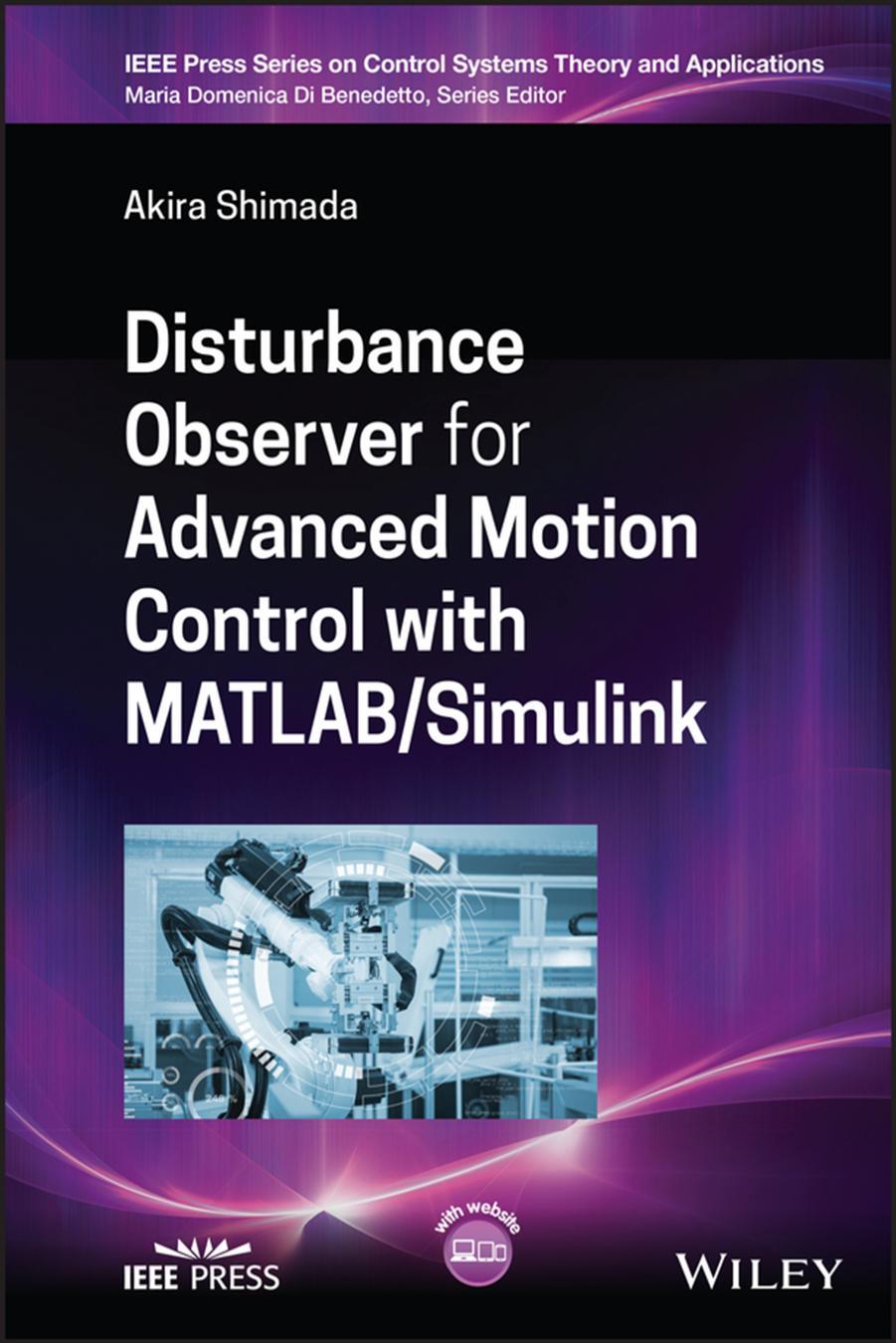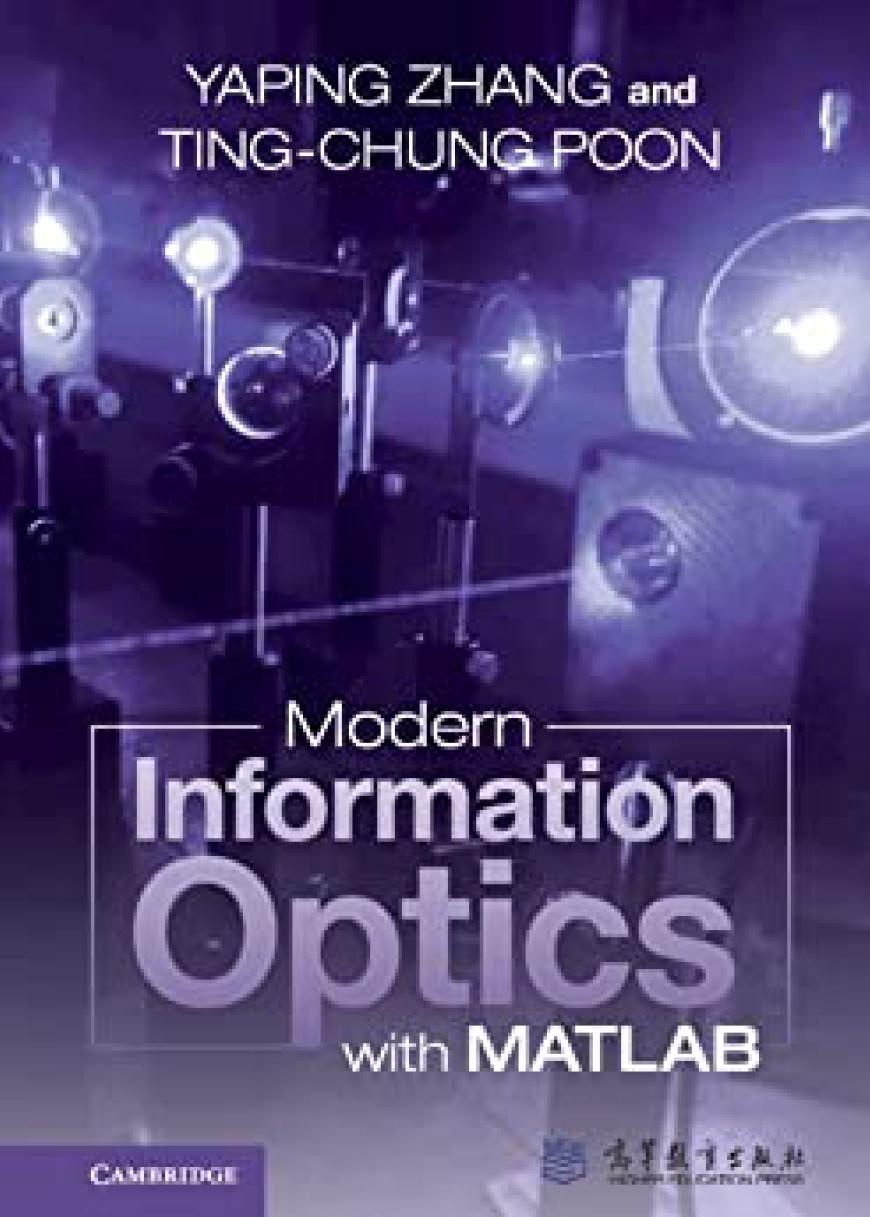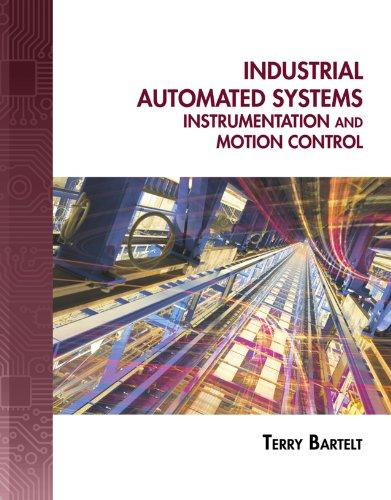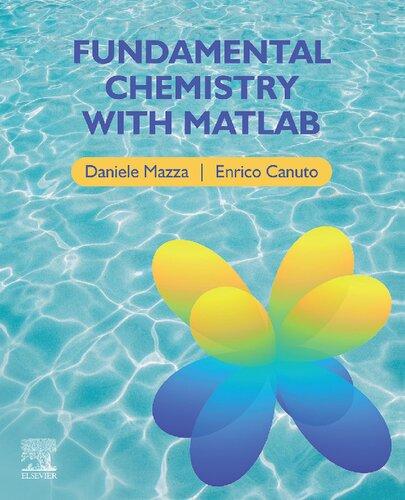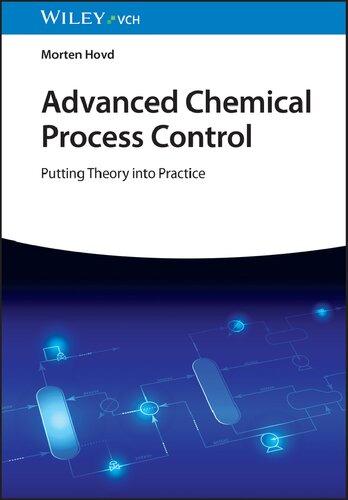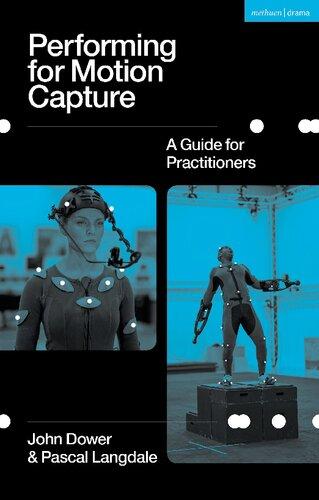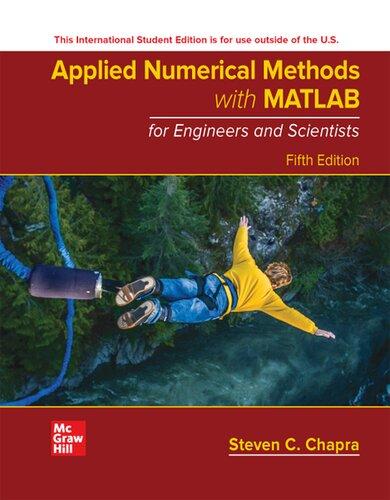DisturbanceObserverforAdvancedMotion ControlwithMATLAB/Simulink
AkiraShimada
ShibauraInstituteofTechnology,Tokyo,Japan
IEEEPressSeriesonControlSystemsTheoryandApplications
MariaDomenicaDiBenedetto,SeriesEditor
Copyright©2023byTheInstituteofElectricalandElectronicsEngineers,Inc.Allrights reserved.
PublishedbyJohnWiley&Sons,Inc.,Hoboken,NewJersey. PublishedsimultaneouslyinCanada.
Nopartofthispublicationmaybereproduced,storedinaretrievalsystem,ortransmittedinany formorbyanymeans,electronic,mechanical,photocopying,recording,scanning,orotherwise, exceptaspermittedunderSection107or108ofthe1976UnitedStatesCopyrightAct,without eitherthepriorwrittenpermissionofthePublisher,orauthorizationthroughpaymentofthe appropriateper-copyfeetotheCopyrightClearanceCenter,Inc.,222RosewoodDrive,Danvers, MA01923,(978)750-8400,fax(978)750-4470,oronthewebatwww.copyright.com.Requeststo thePublisherforpermissionshouldbeaddressedtothePermissionsDepartment,JohnWiley& Sons,Inc.,111RiverStreet,Hoboken,NJ07030,(201)748-6011,fax(201)748-6008,oronlineat http://www.wiley.com/go/permission.
Trademarks:WileyandtheWileylogoaretrademarksorregisteredtrademarksofJohnWiley& Sons,Inc.and/oritsaffiliatesintheUnitedStatesandothercountriesandmaynotbeused withoutwrittenpermission.Allothertrademarksarethepropertyoftheirrespectiveowners. JohnWiley&Sons,Inc.isnotassociatedwithanyproductorvendormentionedinthisbook.
LimitofLiability/DisclaimerofWarranty:Whilethepublisherandauthorhaveusedtheirbest effortsinpreparingthisbook,theymakenorepresentationsorwarrantieswithrespecttothe accuracyorcompletenessofthecontentsofthisbookandspecificallydisclaimanyimplied warrantiesofmerchantabilityorfitnessforaparticularpurpose.Nowarrantymaybecreatedor extendedbysalesrepresentativesorwrittensalesmaterials.Theadviceandstrategiescontained hereinmaynotbesuitableforyoursituation.Youshouldconsultwithaprofessionalwhere appropriate.Further,readersshouldbeawarethatwebsiteslistedinthisworkmayhave changedordisappearedbetweenwhenthisworkwaswrittenandwhenitisread.Neitherthe publishernorauthorsshallbeliableforanylossofprofitoranyothercommercialdamages, includingbutnotlimitedtospecial,incidental,consequential,orotherdamages.
Forgeneralinformationonourotherproductsandservicesorfortechnicalsupport,please contactourCustomerCareDepartmentwithintheUnitedStatesat(800)762-2974,outsidethe UnitedStatesat(317)572-3993orfax(317)572-4002.
Wileyalsopublishesitsbooksinavarietyofelectronicformats.Somecontentthatappearsin printmaynotbeavailableinelectronicformats.FormoreinformationaboutWileyproducts, visitourwebsiteatwww.wiley.com.
LibraryofCongressCataloging-in-PublicationDataAppliedfor:
HardbackISBN:9781394178100
CoverDesign:Wiley
CoverImage:©TeeraKonakan/GettyImages;©Pobytov/GettyImages
Setin9.5/12.5ptSTIXTwoTextbyStraive,Chennai,India
Author’sNote
Itisourgreatpleasuretohaveachancetopublishthebook“DisturbanceObserver forAdvancedMotionControlwithMATLAB/Simulink”andintroduceittoreadersworldwide.
Disturbanceobserver(DOB)isanalgorithmorafunctionforestimatingdisturbanceswell-knowntocontrolengineers.Still,nobookhasbeenpublishedthat systematicallyandcomprehensivelyexplainsitscontents.Forexample,wecan representDOBwithatransferfunctionorinastate-spacerepresentation.
Moreover,wecanalsodesignitasadigitalsystemoruseitinvibrationor communicationdelaysystems.Furthermore,weshouldconsidertheeffectsof noiseandmodelingerrorswhendesigningthesystem.Thisbookincludesall suchproblemsandexplainshowtounderstandandhandletheseissuesinan easy-to-understandmannerwithmanyexamplesusingMATLAB/Simulink.
WeinitiallypublishedthisbookinJapaneseinAutumn2021sincewewantedto postitforJapanesecontrolengineersandstudents.However,afterthepublishing, manyfriends,professors,andengineersrecommendedthatIshouldpublishitin Englishforengineersandstudentsworldwide.Thispublicationisaresponseto theirstrongencouragement.
ThecontentsofthisEnglishversionarethesameasthoseoftheJapanese version,butIrevisedallprogramsandtheSimulinkmodelusingtheMATLAB/SimulinkR2022aversiontomakethemclearforreaders.Thereaderscan downloadallsampleprogramsfromWiley’shomepage.
Moreover,IinitiallyselectedmanyreferenceswritteninJapanese.However, theyarenotconvenientforreadersworldwide.ThereforeIreselectedbooksand articleswritteninEnglish.
Wesincerelyhopethisbookbecomeshelpfulforyou.
BooksintheIEEEPressSeriesonControlSystems TheoryandApplications
SeriesEditor: MariaDomenicaDiBenedetto,Universityofl’Aquila,Italy
Theseriespublishesmonographs,editedvolumes,andtextbookswhicharegeared forcontrolscientistsandengineers,aswellasthoseworkinginvariousareasof appliedmathematicssuchasoptimization,gametheory,andoperations
1. AutonomousRoadVehiclePathPlanningandTrackingControl LeventGüvenç,BilinAksun-Güvenç,ShengZhu,SükrüYarenGelbal
2. EmbeddedControlforMobileRoboticApplications LeenaVachhani,PranjalVyas,andArunkumarG.K
3. MergingOptimizationandControlinPowerSystems:PhysicalandCyberRestrictionsinDistributedFrequencyControlandBeyond FengLiu,ZhaojianWang,ChanghongZhao,andPengYang
4. Model-BasedReinforcementLearning:FromDatatoContinuousActionswitha Python-basedToolbox MiladFarsiandJunLiu.
5. DisturbanceObserverforAdvancedMotionControlwithMATLAB/Simulink AkiraShimada
Contents
AbouttheAuthor xv
Preface xvii
AbouttheCompanionWebsite xxi
1IntroductionofDisturbanceObserver 1
1.1TypesofDisturbanceObservers 1
1.1.1Introduction 1
1.1.2ObserverandControlSystemDesignConcepts 3
1.2FormatofExampleandUseofMATLAB 4
1.2.1FormatoftheExampleProblem 4
1.2.2UsingMATLAB/Simulink 5
1.3HowThisBookIsOrganized 5
1.3.1TheStructureofThisDocument 5
1.3.2HowtoReadThisBook 6 References 7
2BasicsofDisturbanceObserver 9
2.1WhatIsDisturbance 9
2.2HowDisturbanceEstimationWorks 11
2.3DisturbanceRejectionandAccelerationControlSystem 13
2.3.1ConceptofDisturbanceRejectionandAcceleration 13
2.3.2DifferentDisturbanceObserversDependingonHowtheDisturbance IsCaptured 15
2.3.3BasicControlSystemDesign 16
2.4ReactionForceObserver(RFOB) 18
2.4.1ReactionForceObserverDesign 18
2.4.2CombinedUseofDOBandRFOB 20
2.5InternalModelandTwo-degrees-of-freedomControl 24
2.5.1InternalModelPrinciple 24
x Contents
2.5.2FeedforwardControl 28
2.5.3ControlSystemwithDisturbanceObserverandFeedforward 29
2.6EffectofObservationNoiseandModelingError 31
2.6.1EffectofObservationNoise 31
2.6.2EffectofModelingError 31
2.6.3EffectofViscousFriction 32
2.6.4EffectofVaryingMass 33
2.7RealSystemModeling 37
2.7.1DCMotorTorqueControlModel 37
2.7.2WithoutCurrentFeedback 38
2.7.3RelationshipBetweentheCartModelandRotary-typeMotor 38
2.8IdeaofRobustControl 39 References 41
3StabilizedControlandCoprimeFactorization 45
3.1CoprimeFactorizationandDerivationofStabilizingController 45
3.1.1DerivationofParametersforCoprimeFactorization 46
3.1.2StabilizingControllerandFreeParameters 50
3.1.3DoubleCoprimeFactorizationInvolving Q(s) 52
3.2RelationshipwithDisturbanceObserver 52
3.3CoprimeFactorizationandStructureofTwo-degrees-of-freedom ControlSystem 53 References 56
4DisturbanceObserverinStateSpace 59
4.1IdentityInputDisturbanceObserver 59
4.1.1HowtoDesigntheIdentityInputDisturbanceObserverinContinuous System 59
4.1.2ControllabilityandStateFeedback 68
4.1.3Continuous-timeServoSystemwithIdentityDisturbance Observer 69
4.2IdentityReactionForceObserver 72
4.3IdentityOutputDisturbanceObserver 75
4.4IdentityHigherOrderDisturbanceObserverDesign 79
4.5MinimalOrderDisturbanceObserver 82
4.6DesignofPeriodicDisturbanceObserver 89
4.7ObservabilityandNoninput/OutputDisturbances 94
4.7.1MathematicalModelofaDCMotor 94
4.7.2DCMotorObservableMatrixandRank 95
4.7.3ObservabilityofDisturbanceEstimation 97
4.7.4Noninput/OutputDisturbanceObserverandControl 97 References 100
5DigitalDisturbanceObserverDesign 101
5.1IdentityDigitalDisturbanceObserverDesign 101
5.2ConfirmationofSeparationTheorem 108
5.3MinimalOrderDigitalDisturbanceObserver 109
5.4IdentityHigh-orderDigitalDisturbanceObserver 119 References 122
6DisturbanceObserverofVibratingSystems 123
6.1ModelingoftheTwo-inertiaSystem 123
6.2VibrationSuppressionControlinTransferFunction Representation 126
6.3DisturbanceObserverandStabilizationforTwo-inertiaSystems 129
6.3.1ObservertoEstimateInputShaftDisturbance ��d1 129
6.3.2ObservertoEstimateOutputShaftDisturbance ��d2 132
6.4ServoSystemwithDOBforTwo-inertiaSystems 135
6.4.1InputShaftServoSystemConsideringInputShaftDisturbance ��d1 136
6.4.2OutputShaftServoSystemConsideringOutputShaftDisturbance ��d2 138 References 140
7CommunicationDisturbanceObserver 141
7.1SmithMethodOverview 141
7.2CommunicationDisturbanceObserver 142
7.3ControlwithCommunicationDOBUnderDisturbance 146 References 149
8MultirateDisturbanceObserver 151
8.1MultirateSystemModeling 151
8.2MultirateDisturbanceObserver(Method1) 153
8.2.1DisturbanceObserverDesign(Method1) 153
8.2.2ControllerDesignUsingMultirateObserver(Method1) 154
8.3MultirateDisturbanceObserver(Method2) 158 References 161
9ModelPredictiveControlwithDOB 163
9.1ModelPredictiveControl(MPC) 163
9.1.1OverviewofMPC 163
9.1.2FormulationandObjectiveFunctionfortheMPCDesign 165
9.2ConstraintDescriptions 167
9.2.1TreatmentofConstraintsontheControlInput û(k) 168
9.2.2ConstraintsontheControlVariable ̂ z(k) 169
9.2.3Constraintson Δû(k) ChangeintheControlInput 169
9.2.4ConstraintsontheControlInputsandQuantities 170
9.3MPCSystemDesign 170
9.4DesignofDisturbanceObserver-MergedMPCSystem 174
References 178
10KalmanFilterwithDisturbanceEstimation(KFD) 179
10.1DesignofKalmanFilterwithDisturbanceEstimation 179
10.2DesignofStationaryKalmanFilterwithDisturbanceEstimation (SKFD) 190
10.3DesignofExtendedKalmanFilterwithDisturbanceEstimation (EKFD) 193
References 200
11AdaptiveDisturbanceObserver 201
11.1StructureofanAdaptiveObserver 201
11.2DerivationofObservableCanonicalSystemforAdaptiveDOB 202
11.3CreatingStateVariableFilter 203
11.4DesignofKreisselmeier-TypeAdaptiveDisturbanceObserver 208 References 214
12MethodsforMeasuringandEstimatingVelocities 217
12.1ImportanceofVelocityMeasurement 217
12.2VelocityMeasurementandEstimationMethods 219
12.2.1Pseudo-derivative 219
12.2.2CountingandTimekeepingMethods 220
12.2.3 M ∕T Method 222
12.2.4SynchronousCountingMethod 223
12.2.5InstantaneousVelocityObserver 225 References 227
AppendixAMathematicalFoundationsandControlTheory 229
A.1Mathematics 229
A.1.1DefinitionandCalculusofMatrixExponentialFunctions 229
A.1.2PositiveDefiniteMatrix 229
A.1.3MatrixRank 230
A.2BasicClassicalControlTheory 230
A.2.1PolesandZeros 230
A.2.2PIVelocityControl 231
A.2.3PIDPositionControlSystem 232
A.2.4FinalValueandInitialValueTheorems 232
A.3BasicModernControlTheory 233
A.3.1StateandOutputEquations 233
A.3.2SolutionoftheStateEquationfortheContinuousSystem 234
A.3.3EquationofStatetoTransferFunction 234
A.3.4PolesandZerosofContinuousSystems 234
A.3.5ControllabilityandObservabilityofContinuousSystems 235
A.3.6DualityTheorem 236
A.3.7StateFeedbackControlofContinuousSystems 236
A.3.8ServoSystemDesign 243
A.4Doyle’sNotationandDoubleCoprimeFactorization 244
A.4.1Doyle’sNotation 244
A.4.2ConfirmationofDoubleCoprimeFactorization 245
A.5FoundationsofDigitalControlTheory 245
A.5.1DigitalControlandStateandOutputEquations 245
A.5.2PolesandZerosofDigitalSystems 247
A.5.3ReachabilityandObservabilityofDigitalSystems 247
A.5.4DigitalStateFeedbackControlSystemDesign 248
A.5.5DigitalServoSystemDesign 248
A.6RepresentationandMeaningofOptimalProgramming 250
A.6.1WhatIsOptimalProgramming? 250
A.6.2fminconFunction 250
A.6.3ExampleofaDrawingProgram 252 References 254 Index 255
AbouttheAuthor
Dr.AkiraShimada wasborninChiba,Japan,in1958.HereceivedB.S.degreein electronicsengineeringfromtheUniversityofElectro-Communications,Japan, in1983andreceivedPhDinengineeringfromKeioUniversity,Japan,in1996. Aftergraduation,heworkedasaroboticsengineeratSeikoInstrumentsfrom1983 to2001.Hedevelopedsomeindustrialrobotcontrollers.Hismaincontribution wastocreatedigitalservocontrolsystems,includingdisturbanceobservers,and designDCandACservomotordrivers.Concurrently,hewasaguestprofessor atChibaUniversity.HewasanassociateprofessoratthePolytechnicUniversity, Japan,from2001to2009.HehasbeenafullprofessoratShibauraInstituteof Technology,Japan,since2009.Hiscurrentinterestsincludemotioncontrol, robotics,controlengineering,andfreeclimbing.Thepresentstudythemesare motioncontrolandpathplanningandcollisionavoidanceforhumanoidclimbing robots,wheeledmobilerobots,invertedpendulumrobots,autonomousdrones, etc.Hisphilosophyforthestudyistohaveactualandpracticalexperience.When hestudiescookingrobots,hecooksavarietyoffoods.Todevelopclimbingrobots, heclimbsexistingwallsinthemountainsorclimbinggymseveryweek.Heisa memberofIEEE,SICE,andRSJandaseniormemberofIEEJ.
Preface
Thereisanestimationmethodcalledthe“disturbanceobserver.”Whensome mechatronicsystemsmove,friction,gravity,andexternalforcesmaydisturbtheir motion.Werefertothemcollectivelyasdisturbances.Thedisturbancesareoften unmeasurable,andthecontentsareunknown.Ifwecanestimatethetotalvalue ofthesedisturbances,wecanimprovethestabilityandtrackingperformanceof thecontrolsystemorusethemininformationprocessing.Generally,theterm “observer”referstoaconferenceobserver,butitistranslatedas“stateobserver” incontrolengineeringandmeansafunctionforestimatingstatevariables.The observerwasproposedin1964byD.G.Luenberger,saidtobeadoctoralstudent atStanfordUniversitythen[1,2].Thedisturbanceobserverisanobserverthat estimatesdisturbances.SincethepublicationofthepapersbyKiyoshiOhishi, KouheiOnishi,etal.[3]andKouheiOhnishiandToshiyukiMurakami[4], theyhaveattractedwidespreadattentionandhavebeenstudiedandappliedby researchersandengineersworldwide[5–9].MeditchandHostetter[10]reported thedesignofa0-observerforestimatingunknownstationaryinputsanda k-observerforestimatingunknowninputsrepresentedby k-degreepolynomials. Theextendedsystemforobserverdesignisdefinedusingtheunknowninput u(t) as x =[x T (t), uT (t)]T inadditiontotheoriginalstatevariable x (t).Both x (t) and u(t) canbeestimatedaccordingtothegeneralobservertheoryifobservabilityholds. Thisisnotdifferentfromhowwedesigndisturbanceobserversintoday’sstate spacerepresentation.Additionally,manypapershavereportedvariousunknown inputestimationmethods[11–16].However,thename“disturbanceobserver” wasinventedbyfocusingintenselyonthedisturbance.Overall,“disturbance observer”includesalmostcompletedisturbancesuppressioncontrolbyfeeding backthedisturbanceestimatetocancelthedisturbance,suppressparameter fluctuation,andcontrolacceleration.Itmeansthatthe“disturbanceobserver technology”isconsideredtohavestartedwiththepapers[3,4],andmany others.Thisbookaimstosystematicallydescribethedesignprocess,application methods,andvariouspropertiesof“disturbanceobservers”sothattheycanbe
helpfultomanypeoplewhostudycontrol.Inthedesignofdisturbanceobservers formechatronicssystemcontrol,itisnecessarytoobserveorcalculatethe position(orangle)orvelocity(orangularvelocity)informationusingsensors.Itis essentialtoobtainhighlyaccuratevelocityinformationnotaffectedbynoise.We expressoursincerethankstoProf.ToshiakiTsujiofSaitamaUniversityandMr. HiroyukiNagatomifromOhnishiLab.Theycooperatedinwritingthepaperon velocitymeasurementandestimationtechniques.Thecontentsofthispaperwere testedinundergraduateandgraduateclasses,andthenmanysuggestionswere givenbythemembersoftheMotionControlLaboratory(ShimadaLaboratory), especiallyMr.KentaMatsuo,Mr.KazukiTokushige,Mr.KatsumichiTakase, Mr.RyoyaNakajima,andMs.YukaKimura.Inaddition,Prof.TakashiOhhira ofChuoUniversitypointedoutinadequaciesinthedescriptionsandmade manysuggestions.CoronaPublishingCo.,Ltd.publishedthisbookasoneof thenewbookssolicitedbytheSocietyofInstrumentandControlEngineers (SICE)in2021.WeexpressoursinceregratitudetoProf.ShiroMasudaofTokyo MetropolitanUniversitywhowasinchargeofthisbookandthePublication Committeefortheirsupportinitscompletion.Finally,wethankProf.Kouhei Ohnishiandmanyfriendsfortheircontinualmeetingsandguidance.
References
1 DavidG.Luenberger:Observingthestateofalinearsystem,IEEE TransactionsonMilitaryElectronica,Vol.8,No.2,74–80,1964.
2 GeorgeEllis:ObserversinControlSystems:APracticalGuide,AcademicPress, 2014.
3 KiyoshiOhishi,KouheiOhnishi,KunioMiyachi:Torque-SpeedRegulationof MotorBasedonLoadTorqueEstimationMethod(IPEC-Tokyo’83),1209–1218, 1983.
4 KouheiOhnish,ToshiyukiMurakami:Advancedmotioncontrolinrobotics, 15thAnnualConferenceofIEEEIndustrialElectronicsSociety(IECON’89), 356–359,1989.
5 AsifSabanovic,KouheiOhnishi:MotionControlSystems,Wiley-IEEEPress, 2011.
6 EmreSariyildiz,RobertoOboe,KouheiOhnishi:Disturbanceobserver-based robustcontrolanditsapplications:35thanniversaryovervew,IEEETransactionsonIndustrialElectronics,Vol.67,No.3,2024–2053,2020.
7 ShihuaLi,JunYang,Wen-HuaChen,XisongChen:Disturbance Observer-BasedControl,CRC-Press,2014.
8 AkitaShimada,KiyoshiOhishi,MasaakiShibata,OsamuIchikawa: EEtextmotioncontrol,IEEJ&Ohmsha,2004,118–119,157–164,192–202 (InJapanese).
9 AkiraShimada:Recentadvancesandoutlookinindustrialinstrumentation andMECHATRONICScontrol,IEEJTransactionsofElectricalandElectronic Engineering,Vol.11,No.52,S100–S107,2016.
10 J.S.Meditch,G.H.Hostetter:Observersforsystemswithunknownand inaccessableinputs,InternationalJournalofControl,Vol.19,No.3,473–480, 1974.
11 Shih-HoWang,E.JournalDavison,PeterDorato:Observingthestatesof systemswithunmeasurabledisturbances,IEEETransactionsonAutomatic Control,Vol.20,No.5,716–717,1975.
12 C.D.Johnson:Optimalcontrolofthelinearregulatorwithconstant disturbances,IEEETransactionsonAutomaticControl,Vol.13,No.4, 416–421,1968.
13 JohnO’Reilly:Minimal-orderobserversforlinearmultivariablesystems withmeasurabledisturbances,InternationalJournalofControl,Vol.28, No.5,743–751,1978.
14 TsutomuMita:Onthesynthesisofanunknowninputobserverforaclassof multi-input/outputsystems,InternationalJournalofControl,Vol.26,No.6, 841–851,1977.
15 NobuakiKobayashi,TakayoshiNakamizo:Anobserverdesignforlinear systemswithunknowninputs,InternationalJournalofControl,Vol.35,No.4, 605–619,1982.
16 S.P.Bhattacharyya:Observerdesignforlinearsystemswithunknowninputs, IEEETransactionsonAutomaticControl,Vol.23,No.3,483–484,1978.
1.1TypesofDisturbanceObservers
1.1.1Introduction
ThisbookintroduceseighttypesofDOBsfordesigningaDOB,asshownin Table1.1. Kalmanfilter intheeighthlineisnotanobserverbutisincludedin
1Exampleshavebeenproposedsuchasreferringtoitasdisturbanceandvelocityestimation observer[3,4]becauseitestimatesvelocityaswellorreactionforceestimationobserver[5] becauseitestimatesreactionforcespecifically.
DisturbanceObserverforAdvancedMotionControlwithMATLAB/Simulink,FirstEdition.AkiraShimada. ©2023TheInstituteofElectricalandElectronicsEngineers,Inc.Published2023byJohnWiley&Sons,Inc. Companionwebsite:www.wiley.com/go/disturbanceobserver
1IntroductionofDisturbanceObserver
Table1.1 Typesofdisturbanceobserverdesign.
Systems DOBdesignforms Objecttoestimate
(1)Transferfunction Onlydisturbances
Continuous (2)Identityobserver Allstatevariablesanddisturbances system (3)Minimalorderobserver Allstatevariablesexceptoutputs (4)Adaptiveobserver Parameters,statevariablesanddisturbances (5)Transferfunction Onlydisturbances
Digital (6)Identityobserver Allstatevariablesanddisturbances system (7)Minimalorderobserver Allstatevariablesexceptoutputs (8)Kalmanfilter Allstatevariablesanddisturbances thistablebecauseitisdesignedforestimatingdisturbances.TheKalmanfilter andtheadaptiveobservercanbedesignedasbothcontinuousanddigitalsystems, buttheyarelimitedtotheabove.
Manyreferencesusethe transferfunction ofthecontinuoussystemtorepresentDOBs,specializingonlyinitsestimation,whichcorrespondstothefirstline ofTable1.1.Thismaybebecauseitissimpleandeasyforustounderstandand implement.However,wecansimultaneouslyestimatethecontrolplant’soriginal statevariables,suchasvelocityandcurrentotherthandisturbances,usingthe generalobservertheory.Thesecorrespondtolines2–4and6–8ofthetable.
Supposethatreaderswanttousevariousphysicalestimateseffectivelyin designingthecontrolsystem.Inthatcase,theycandesigntheDOBusingthe identityobserver designingmethod.However,iftheyemphasizethatthey donotneedtoestimatetheobservedoutput,theycanusethe minimalorder observer designmethodasanexcellentchoice.
Theoretically,DOBsexpressedintransferfunctionsareequivalenttothose derivedfromthedesignprocessforminimalorderobservers,asshowninrows 3and7.Manystudiesusetheformofthetransferfunctionfromthebeginning becauseonlythedisturbanceestimationfunctionisextractedandreexpressedin theformofatransferfunctioninthedesignprocess.
Thedifferencebetweenacontinuousandadigitalsystemiswhetherthedesign isbasedoncontinuouscontroltheoryordigitalcontroltheory.2 Ifthereisnoneed toconsidertheeffectofthelengthorshortnessofthecontrolperiod,itisbetter todesignacontinuoussystemwherethephysicalmeaningiseasytograsp.However,itismoredesirabletodesignitasadigitalsystemifthecontrolcycleandthe
2Notethatthisbookdoesnotdistinguishbetweenthewordsdiscretesystemsanddigital systems.
3 programtobeimplementedonadigitalcomputerareconsidered.Thebestdesign methodcannotbegenerallydeterminedandislefttothedesigner’sdiscretion.
1.1.2ObserverandControlSystemDesignConcepts
Thedisturbanceestimate ̂ d(t) intheDOBisoftenfedbackwithasignforcanceling disturbance.3
Figure1.1representsthestructureofabasiccontrolsystemthatusesaDOB. Inthefigure,the“disturbanceobserver”outputsthedisturbanceestimate ̂ d,and positivefeedback isperformedtocancelthedisturbance d.Consequently,the controlplantappearsfreeofdisturbanceswhenviewedfromoutsidethedotted section,andtheapparentcontrolinputis u.Thecontrolinputis u,and u standsfor theforce f [N]foralinearmechatronicssystem,thetorque �� [Nm]forarotating mechatronicssystem,and V [V]forthevoltageinputofanelectriccircuit.The output y isalsochosenasthevelocity �� [m/s], �� [rad/s],position x [m], �� [rad],etc. Inthisbook,wemainlyuselinearmotionmechatronicssystemsasexamples;thus, theexplanationwillbebasedonthatassumption.Forexample,theequationof motionofaqualitypointinavacuumis f = ma. DOBsareoftenusedtorealizeacontrolmethodcalled“accelerationcontrol.” Thenominalvalueofthemass m0 isconnectedinaseriesinfrontofthedotted line,andtheapparentcontrolinputistheaccelerationreferencevalue aref . 4 Supposetheactualaccelerationcanbemadetomatchtheaccelerationreferencevalue.Inthatcase,thecontrolplantcanberegardedasasingle-dottedline, andthepositionandvelocitycontrollersortheforcecontrolcontrollercanbe
Figure1.1 Basicstructureofthecontrolsystembasedonaccelerationcontrol.
3Ifthedisturbanceisinputasanegativecomponent,positivefeedbackisusedtocancelitout (positivefeedback),andnegativefeedbackisusedtodefineitwithapositivesign(negative feedback).However,feedbackisnotalwaysamust.
4Inthisbook, m denotesthemassofthecontrolplantgenerally.However,onlywhenwewant toemphasizethatitisanominalvaluethisbookuses m0 .
1IntroductionofDisturbanceObserver
implementedoutside.Thismeansthatthiscouldenablethedesignofasimple controlsystem.Theaccelerationcontrollerisconfiguredinsidethecontrolsystem basedontheconceptof“movingamechatronicssystembyacceleration,”andthe controllerforeachapplicationisconfiguredontheoutside.5
Supposeacontrolsystemistobedesignedbasedonthebasicprincipleofdynamicsthat“amechatronicssystemisdrivenbyforce(orarotatingsystemisdrivenby torque).”Itisnaturaltouse u or u (=force f foralinearmotionsystemortorque �� forarotatingsystem)asthecontrolinputinsteadof aref anddesignthecontrol systemaccordingtothegeneraldynamicsmodel.Here, m0 isunnecessarybecause thepartinthebrokenlinerepresentstheoutercontroller.
Analternativeistoworkwithoutthefeedbackfromthedisturbanceestimate ̂ d.Forexample,whendesigningtheidentityDOBbasedonthestate-spacemodel, thepurposeisnottoestimatethedisturbancebuttoestimatethestatevariable x (t) withhighaccuracyconsideringtheeffectofthedisturbance.
Thisbookintroducesthedisturbanceestimationmethodandvariouscontrol methodsusingvariousconcepts,includingthecasewhenthecontrolplantisa multipleinput,multipleoutput (MIMO)system.
Weconsidervariousconditionsandenvironmentssuchasnonlinearity,instability,andtheeffectofnoise.Flexibleuseofclassicalcontrol,moderncontrol,and otherrobustcontroltheoriescanfurtherextendtheusefulnessofDOBs.
1.2FormatofExampleandUseofMATLAB
1.2.1FormatoftheExampleProblem
MoststudiesdealingwithDOBsareexamplesofrotatingsystemsbasedon motorcontrol.However,tounderstandtheessentialtheory,thisbookintroduces single-inputsingle-output(SISO)systemexampleswithacartasaninstanceof alinearmechatronicssystembecausewebelievethatitissimpleandeasyto understand.6 Thereaderwhoneedstodesignarotatingsystemcouldconvertthe linearmodeltoarotatingmodel.
Considerasimplespring-massdampersystem.Usingtheposition x ,velocity ��, force f ,externalforce fex , coefficientofviscousfriction c [N/(m/s)],and coefficientofelasticity k [N/m],thefollowingequationscanbeobtained:
5Theconceptofaccelerationcontrolistocontaintheproblemsofthedynamicsysteminside. Afterthat,itistoconsiderthekinematicmodelasthecontrolplant.However,thisdoesnot meanthatfrictionandthelikehavedisappeared.Therefore,caremustbetakennottooverlook theessentialaspectsofmechatronicssystemstructureanddynamics.
6Somemayarguethatweareonlydealingwithlow-dimensionalobjects,butweprioritizeease ofunderstanding.
Incontrast,assumethattherotationangle �� ,rotationvelocity ��,torque �� ,disturbancetorque ��ex ,momentofinertiaoflinearmotionsystem J [kgm2 ],coefficient ofviscousfriction c�� [Nm/(rad/s)],andthemodulusofelasticity k�� [Nm/rad] satisfy:
Notethatthedisturbanceestimationwiththevelocityinformationandthatwith thepositioninformationareoftenillustratedsidebyside.
1.2.2UsingMATLAB/Simulink
Thisbookincludessampleprogramswith“MathWorks” MATLAB/Simulink® tohelpthereaderunderstandthespecifics.Althoughtheauthorisnotanexpert inMATLABprogramminganddoesnothavethelatestknowledge,wehavetried tomakeitaccessibletoathirdparty.However,theoriginalm-filesamplecodes madebytheauthorincludelongcodesonhowtodrawfiguresasthesimulation results,andthenumberofpageswouldbeenormous.Hence,thesamplem-files includeuptothepartsforcallingandexecutingSimulinkmodelsbutnottheparts relatedtodrawingfigures.Readerswouldfindthetypicaldrawingprograminthe appendixhelpful.
1.3HowThisBookIsOrganized
1.3.1TheStructureofThisDocument
ThebasicsofDOBsareexpressedinChapter2,mainlyinthetransferfunctionrepresentation.Specifically,theconceptofdisturbancesandthebasicdesignmethods areintroduced,anddisturbancerejectioncontrolandaccelerationcontrolmethodsareexplained.Anobserverforestimatingthereactionforceisintroduced, andthenthe internalmodelprinciple and two-degrees-of-freedom (2-DOF) controlsystem areaddressed.Finally,wedescribetheeffectofmodelingerror.
InChapter3,weintroducetherelationshipbetweenthestabilizedcontrolsystemusingthecoprimefactorizationandthecontrolsystemwithaDOBandshow thedesignofthefreeparameter Q(s) fortheuncertaintyofthecontrolplant.This partisanencounterbetweentheso-called“robustcontroltheory”andtheDOB.
Chapter4introducesDOBsandcontrolsystemdesignmethodsforcontinuoussystemsbasedonmoderncontroltheory,especially identitydisturbance observer, minimalorderdisturbanceobserver, higherorderdisturbance observer,and periodicdisturbanceobserver.Additionally,observability,i.e. thepossibilityofobserverdesign,isexplainedusingaDCmotorasasubject.
InChapter5,wepresentthedesignmethodfordigitalsystems.AsinChapter4, thesamedimensions,minimumdimensions,andhigherorderdisturbancesare
1IntroductionofDisturbanceObserver
treated.Wealsoexplaintheseparationtheorem,whichallowsustodesignthe controlsystem’spolesandthepolesoftheobserverseparately.
Chapter6dealswithdisturbanceestimationforthe vibrationsystem.Thedisturbancesinthischapterareneitherinputnoroutputdisturbancesbutexactly disturbancestotheinternalstatevariables,i.e. noninput/outputdisturbances. However,theyseemtobegoodexamplesofhowtheycanbeestimatedifthe observabilityissatisfied.
Chapter7introducesatechniquetoestimatetheeffectof communication delays,idletimedisturbance,andstabilitymaintenance.
Chapter8focusesonthe multiratecontrolsystem,whichhasrecently attractedmuchattentionandalsointroducestheimpactofusingaDOBin conjunctionwithit.
Chapter9introducesthe modelpredictivecontrol (MPC)combinedwitha DOB.AlthoughtheDOBinthischapterisnotnewandusestheobserversin Chapter5,wedecidedtointroduceitbecausewebelievethecombinationwith MPCismeaningful.
InChapter10,weintroduceadisturbanceestimationmethodusingthe Kalmanfilter.Themethodisnotacompletedesignmethod,andalthoughthe statevariablescanbeestimatedwithhighaccuracy,thedisturbanceestimationis slow.Tocompensateforthisshortcoming,the B andcovariancematrices,subject tosystemnoise,aresetbytrialanderror.Othermethods,suchasassuming disturbancesrepresentedbyhigherorderpolynomialsandmodifyingtheerror covariancematrix,arealsoreported,andfuturedevelopmentsareexpected.
InChapter11,weshowthatadaptivecontroltheorycanbeusedtodesignDOBs, suchasthe adaptivedisturbanceobserver.AnadaptiveDOBisanobserverthat simultaneouslyestimatestheparametersrepresentingthecontrolplant,thestate variables,andthedisturbances.Thispaperusesonlyclassicaldesignmethods,and futuredevelopmentsareexpected.
Chapter12isonvelocitymeasurementandestimation,whosecharacteristics mayfeeldifferentfromallofthepreviouschapters.Thischapterwasadded becausetherehavebeenmanyreportsontheuseofvelocityinformationin implementingDOBs.Itisnecessarytopayattentiontothevelocitymeasurement andestimationmethodstoensuretheaccuracyoftheestimation.
ThisbookdoesnotcoverfurtherdevelopmentsinDOBs,suchas haptics [6],or evenapplicationstoartificialintelligence.Nevertheless,webelievethatthisbook willbefoundhelpfulandwidelydeployed.
1.3.2HowtoReadThisBook
Whilemanytechnicalbooksallowthereadertounderstandthebook’scorestep bystepasonereadsfromChapter1onward,thisbookdoesnotnecessarilydoso.
